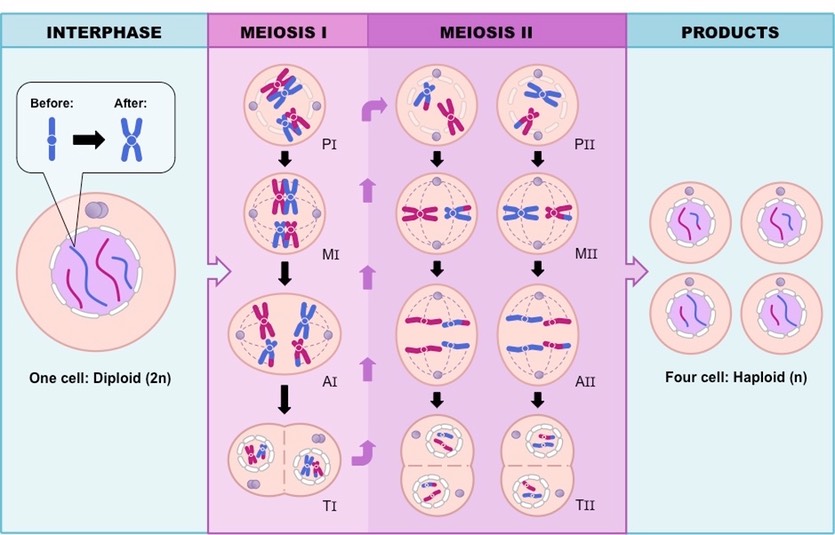Meiosis consists of two divisions and results in the formation of four daughter cells
- Interphase replicates DNA in the S phase, so chromosomes should initially possess sister chromatids ( | → X )
- The first division separates the homologous pairs ( X X → X , X ) and hence halves the chromosome number
- The second division separates the sister chromatids ( X → | , | ) leading to the formation of single chromatid chromosomes
- By the end of the process, the cells should be haploid (have half the number of chromosomes of the original diploid cell)
Drawing the Stages of Meiosis

